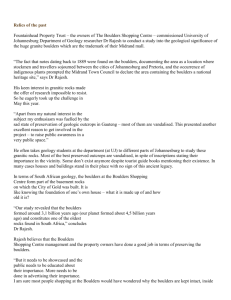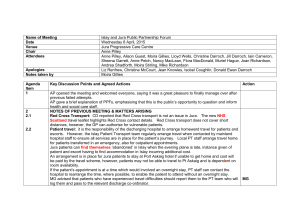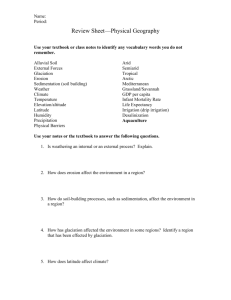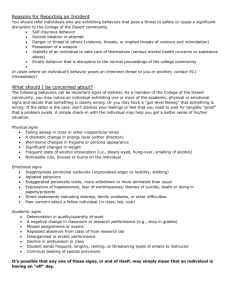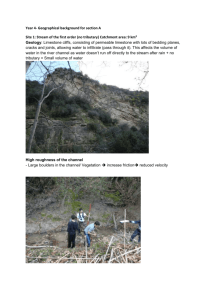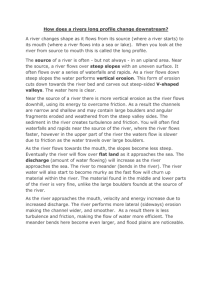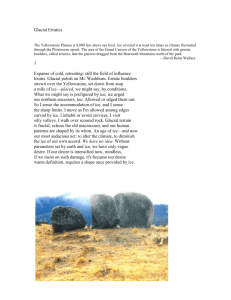Graf_Angela_Talk - SWISS GEOSCIENCE MEETINGs
advertisement
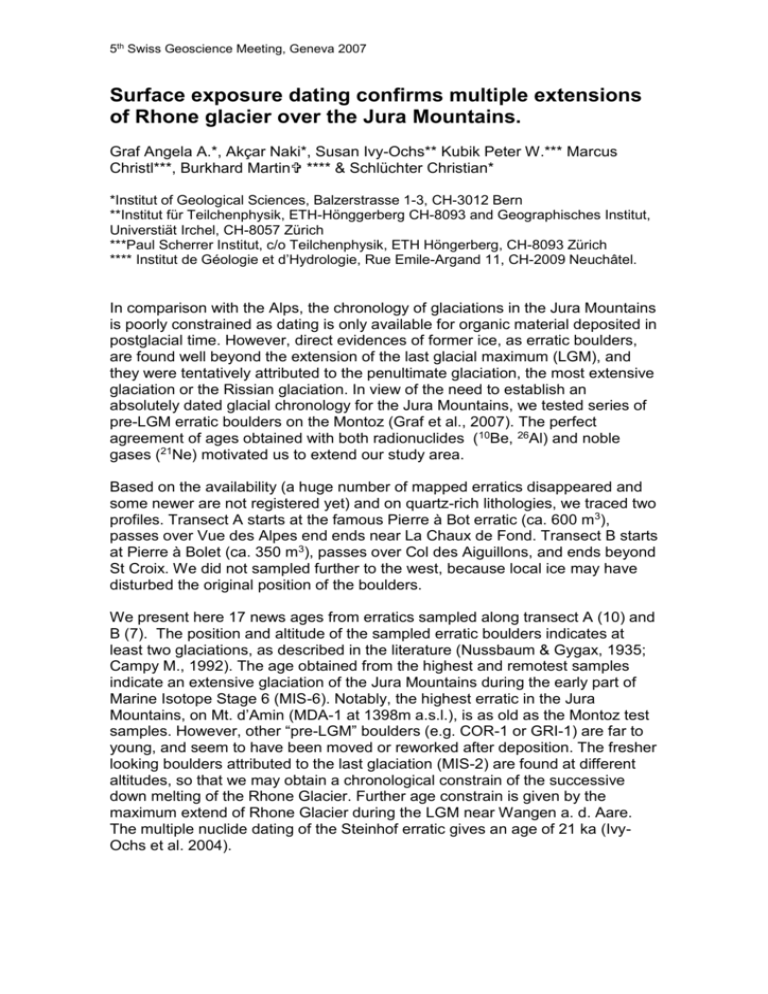
5th Swiss Geoscience Meeting, Geneva 2007 Surface exposure dating confirms multiple extensions of Rhone glacier over the Jura Mountains. Graf Angela A.*, Akçar Naki*, Susan Ivy-Ochs** Kubik Peter W.*** Marcus Christl***, Burkhard Martin **** & Schlüchter Christian* *Institut of Geological Sciences, Balzerstrasse 1-3, CH-3012 Bern **Institut für Teilchenphysik, ETH-Hönggerberg CH-8093 and Geographisches Institut, Universtiät Irchel, CH-8057 Zürich ***Paul Scherrer Institut, c/o Teilchenphysik, ETH Höngerberg, CH-8093 Zürich **** Institut de Géologie et d’Hydrologie, Rue Emile-Argand 11, CH-2009 Neuchâtel. In comparison with the Alps, the chronology of glaciations in the Jura Mountains is poorly constrained as dating is only available for organic material deposited in postglacial time. However, direct evidences of former ice, as erratic boulders, are found well beyond the extension of the last glacial maximum (LGM), and they were tentatively attributed to the penultimate glaciation, the most extensive glaciation or the Rissian glaciation. In view of the need to establish an absolutely dated glacial chronology for the Jura Mountains, we tested series of pre-LGM erratic boulders on the Montoz (Graf et al., 2007). The perfect agreement of ages obtained with both radionuclides (10Be, 26Al) and noble gases (21Ne) motivated us to extend our study area. Based on the availability (a huge number of mapped erratics disappeared and some newer are not registered yet) and on quartz-rich lithologies, we traced two profiles. Transect A starts at the famous Pierre à Bot erratic (ca. 600 m3), passes over Vue des Alpes end ends near La Chaux de Fond. Transect B starts at Pierre à Bolet (ca. 350 m3), passes over Col des Aiguillons, and ends beyond St Croix. We did not sampled further to the west, because local ice may have disturbed the original position of the boulders. We present here 17 news ages from erratics sampled along transect A (10) and B (7). The position and altitude of the sampled erratic boulders indicates at least two glaciations, as described in the literature (Nussbaum & Gygax, 1935; Campy M., 1992). The age obtained from the highest and remotest samples indicate an extensive glaciation of the Jura Mountains during the early part of Marine Isotope Stage 6 (MIS-6). Notably, the highest erratic in the Jura Mountains, on Mt. d’Amin (MDA-1 at 1398m a.s.l.), is as old as the Montoz test samples. However, other “pre-LGM” boulders (e.g. COR-1 or GRI-1) are far to young, and seem to have been moved or reworked after deposition. The fresher looking boulders attributed to the last glaciation (MIS-2) are found at different altitudes, so that we may obtain a chronological constrain of the successive down melting of the Rhone Glacier. Further age constrain is given by the maximum extend of Rhone Glacier during the LGM near Wangen a. d. Aare. The multiple nuclide dating of the Steinhof erratic gives an age of 21 ka (IvyOchs et al. 2004). 5th Swiss Geoscience Meeting, Geneva 2007 Figure 1. Overview of the two transects and the test area. The thick line represents the approximate extension of the Rhone glacier during the last glacial maximum. Positions of the boulders with expected age are shown by the dots. REFERENCES Campy, M., 1992: Palaeogeographical relationship between Alpine and Jura Glaciers during the two last Pleistocene glaciations. Palaeogeography, Palaeoclimatology, Palaeoecology 93, 1-12. Graf, A.A., Strasky, S., Ivy-Ochs, S., Akçar, N., Kubik P.W., Burkhard, M., & Schlüchter, C: first results of cosmogenic dated pre-Last Glaciation erratics from the Montoz area, Jura Mountains, Switzerland. Quaternary International, 164165, 43-53. Ivy-Ochs, S., Schafer, J., Kubik, P.W., Synal, H.A. & Schluchter, C., 2004: Timing of deglaciation on the northern Alpine foreland (Switzerland). Eclogae Geologicae Helvetiae, 97(1): 47-55. Nussbaum, F., & Gygax, F., 1935: Zur Ausdehnung des risseiszeitlichen Rhonegletschers im französischen Jura. Eclogae Geologicae Helveticae 28, 659-665.
